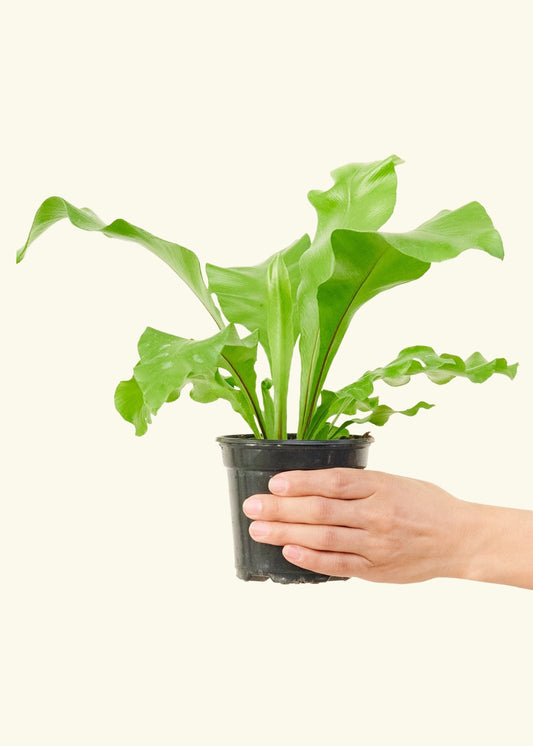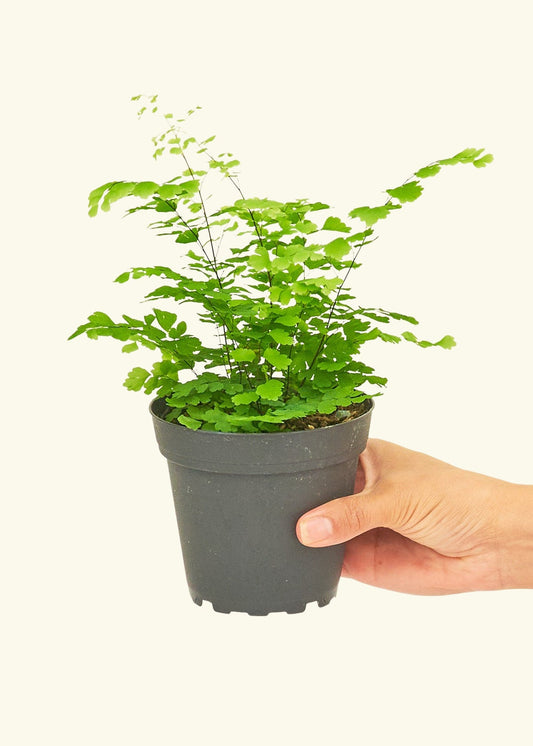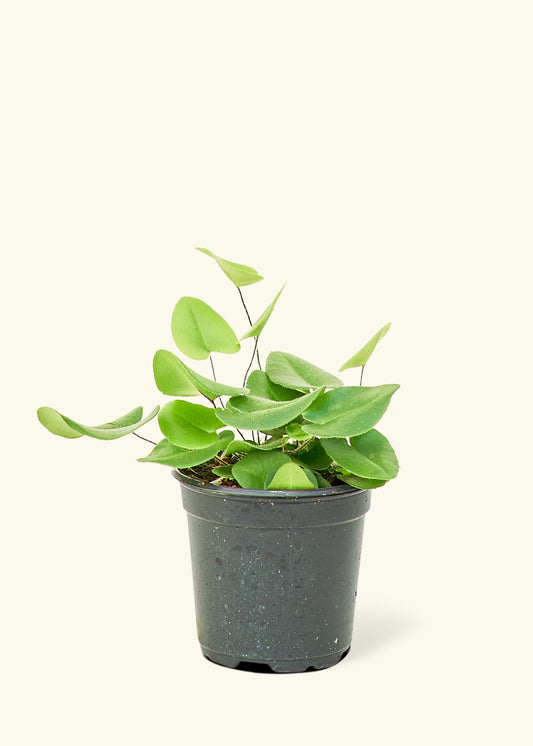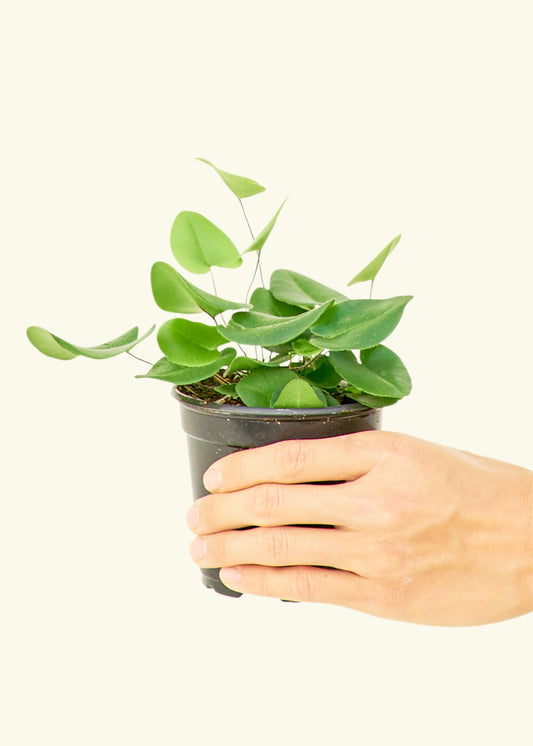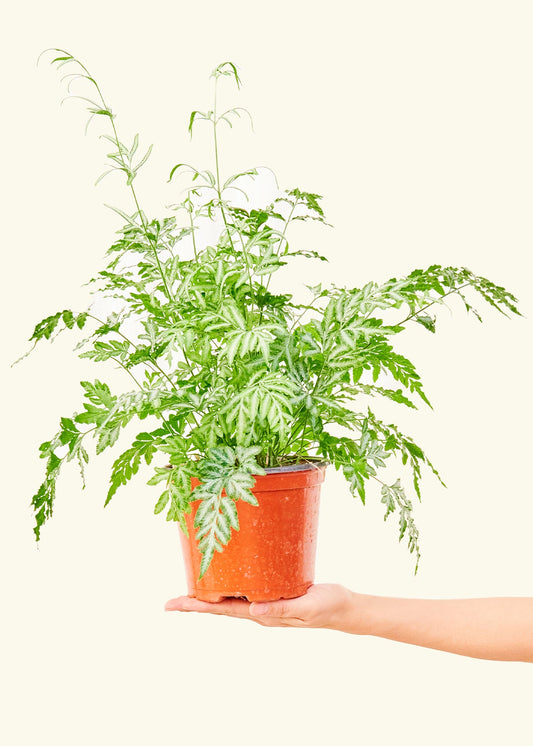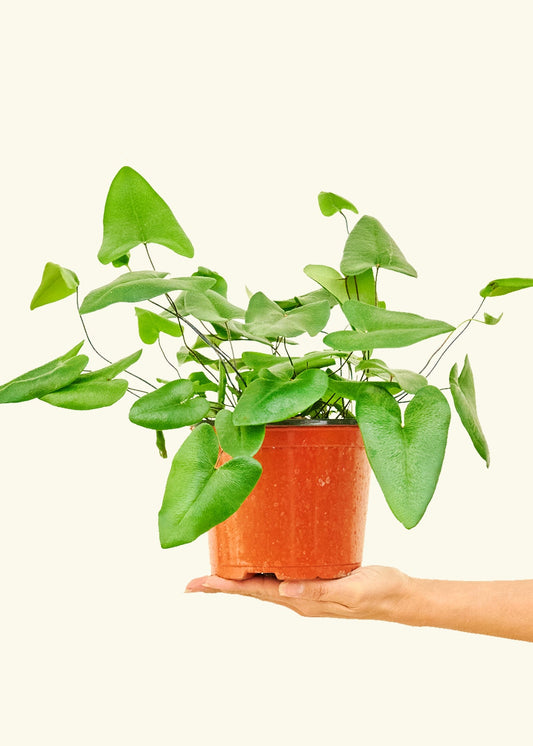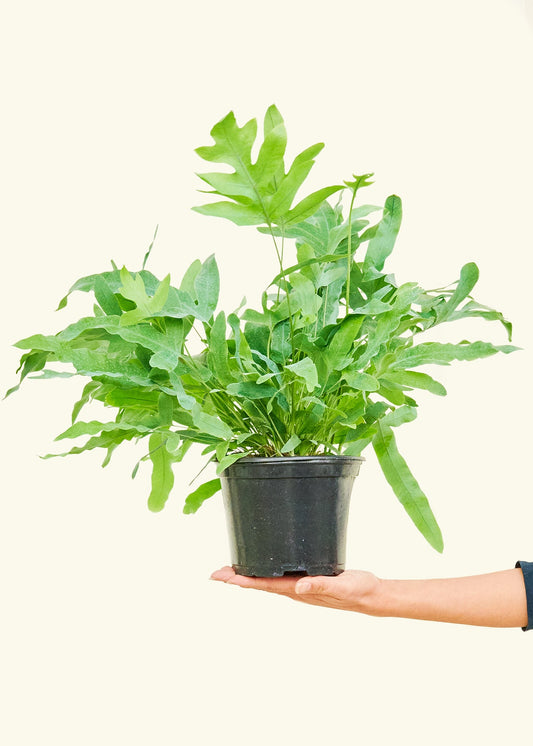Ferns: Overview
Are you looking to add soft texture, timeless greenery, and easygoing charm to your shelves or shaded patio? Fern plants are ideal for anyone who loves a classic, fuss-free houseplant with just the right amount of drama. From sculptural fronds to feathery fullness, ferns bring graceful energy to any corner—no flowers required.
These leafy beauties date back over 300 million years, making them one of the oldest plants still thriving today. Originally from tropical rainforests and woodlands, fern species can now be found worldwide. Many are hardy in USDA Zones 3 through 10, and their incredible range includes everything from delicate trailing varieties to bold, upright foliage. Indoors, they’re best known as humidity-loving shelf companions, but some types can thrive outdoors in shady gardens or even full sun (yes, really - keep an eye out for “sun ferns”).
Most indoor fern plants are non-toxic to pets and children, but it’s always wise to double-check species if you have curious companions. Ferns also carry beautiful symbolic meaning: in many cultures, they represent new beginnings, magic, and resilience.
Are you ready to get started? Two standout options include the sculptural Blue Star Fern, known for its silvery-green leaves and air-purifying powers, and the stunning Staghorn Fern, a pet-friendly pick that adds texture and charm to small spaces. Whether you’re after a bold statement or a soft accent, there’s a fern for every vibe.
Fern Plant Benefits
- Help purify indoor air by filtering toxins like formaldehyde and xylene
- Thrive in humidity, hence ideal plants for bathrooms
- stress and boost mood with lush, calming greenery
- Pet-friendly options are available for worry-free decorating
- Versatile for shelves, hanging baskets, and shaded outdoor spots
- Low-maintenance once established, especially in humid spaces
Fern Plant Care: Growing Guide
Ferns are known for their love of moisture and shade, but with the proper setup, they’ll reward you with full, feathery fronds and steady growth. Here’s how to keep your fern plants thriving indoors or out.
Watering, Light, Humidity, and Temperature
Ferns like consistently moist soil, never soggy or dry. Water your fern when the top inch feels dry, and avoid letting the pot sit in excess water. Place them in bright, indirect light and aim for high humidity with temperatures between 60°F and 75°F.
Repotting, Soil, and Feeding
Use a well-draining, peat-based mix and repot every 1-2 years, or when roots outgrow the container. Ferns don’t need much food. Feed monthly during spring and summer with a diluted liquid fertilizer to support healthy foliage and frond production.
Propagation
You can propagate most ferns by division. Gently separate clumps when repotting, ensuring each section has healthy roots. Replant in fresh soil and water well. Some species also spread by spores, but division is easiest for beginners.
Pruning, Cleaning, and Common Issues
Snip away dead or yellowing fronds at the base to keep your plant looking fresh. Wipe fronds gently to remove dust. Brown edges usually signal dry air, while drooping can mean overwatering. Boost humidity or adjust watering to help.
Choose From Different Types of Fern Plants
With hundreds of fern varieties, finding one that fits your style and space is easy. Here are four unique types of indoor fern plants available now at Hey Rooted.
Boston Fern
Description: The Boston Fern (Nephrolepis exaltata bostoniensis) is a classic houseplant known for its arching, feather-like fronds and air-purifying abilities. Its bright green foliage spills beautifully from hanging baskets or shelves, and it thrives in humid conditions with filtered light and regular watering.
Heartleaf Fern
Description: The Heartleaf Fern (Hemionitis arifolia) is a popular fern that adds beauty and curiosity to your plant collection. Its delicate, heart-shaped foliage enjoys ample indirect light and higher humidity.
Bird’s Nest Fern
Description: Unlike most ferns, the Bird’s Nest Fern (Asplenium nidus) has broad, glossy leaves that grow in a circular rosette, resembling a bird’s nest. Native to tropical rainforests, it prefers warm temperatures, indirect light, and higher humidity for best growth.
Maidenhair Fern
Description: The Maidenhair Fern (Adiantum aethiopicum) brings elegance to any space with delicate, fan-shaped leaflets and fine black stems. It’s a little more finicky than some, needing steady moisture and gentle light, but its graceful appearance makes it well worth the effort.
Shop for Gorgeous Ferns for Sale at Hey Rooted Now!

